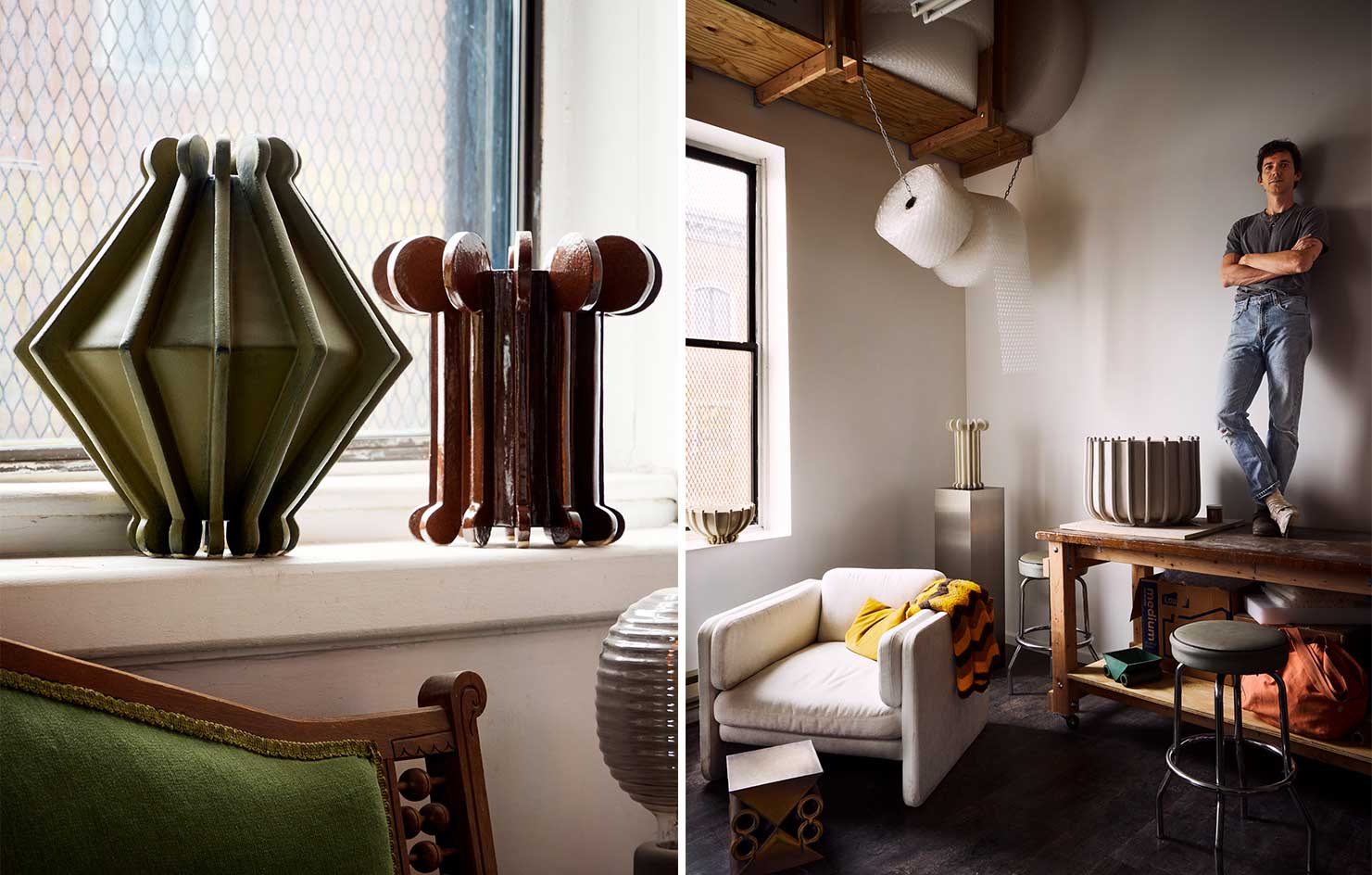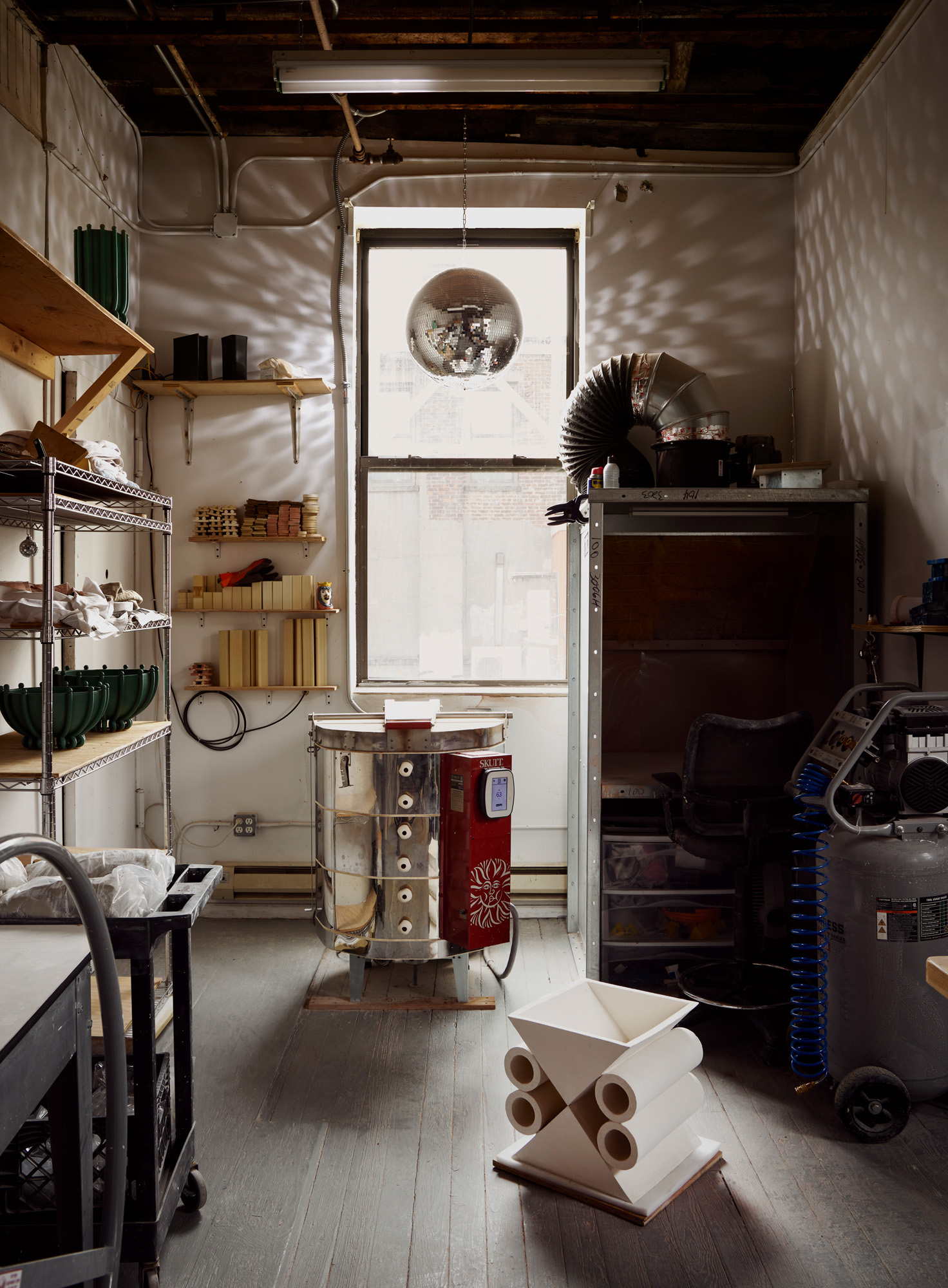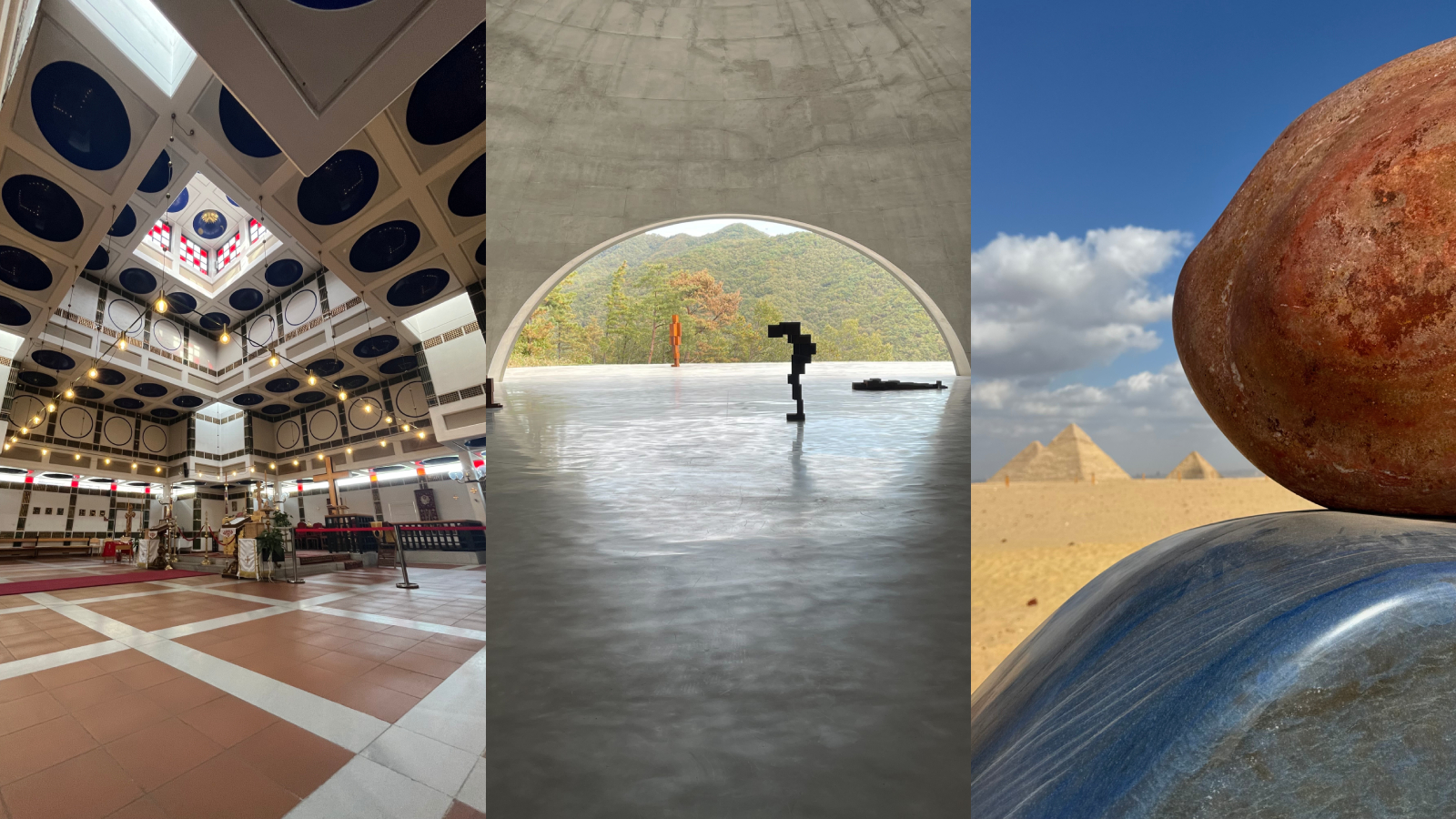Devin Wilde on working with clay: 'It teaches me to see and appreciate the beauty in imperfection'
Brooklyn ceramicist Devin Wilde builds on his architectural training, drawing on classicism, art deco and postmodernism for his geometric creations
Michael Reynolds - Art Direction

American artist Devin Wilde admits to possessing perfectionist tendencies, but relishes the fallibility of his chosen medium, clay. ‘I find the ceramic process to be an integral part of my personal growth,’ he says. ‘Working with clay is humanistic. It teaches me to see and appreciate the beauty and wholeness in imperfection.’ The Brooklyn-based ceramicist originally attended Stanford University to study architecture, then pivoted to work in digital and user experience design before moving into the more tangible practice of woodworking.
After completing two artist residencies working with clay at the prestigious Penland School of Craft and Anderson Ranch Arts Center, Wilde founded his ceramics practice in 2023. In his first collection, he slyly incorporates the more structural tenets of these former disciplines into vessels and side tables, while summoning references to a range of artistic and design movements imbuing his pieces with an assured eternality. This has drawn the attention of major retailers, including Lawson-Fenning and Spartan Shop, which carry his work, as well as a growing number of architects and designers who have commissioned pieces for major projects.'
Devin Wilde's geometric creations

Artist Devin Wilde holding ‘Vessel No. III’ in copper patina glaze
Wilde uses geometric shapes both ornamentally and functionally in compelling and tenuous arrangements. In many of his vessels, the capacious cylindrical or semicircular containers are supported by contrastingly small circular discs or coiled feet. Each foot is the terminus of fanciful ribs that sneak up the sides of the pieces, acting as a decorative scaffold. The ribs are designed in high relief to the surface of the vessel’s container, which Wilde credits as a sculptural response to light. ‘It creates an interplay of light and shadow,’ he says. ‘This secondary layer of ribs elevates the flat surface. I want to create a pattern of shapes whose shadows reinforce the dynamism of whatever is going on in the piece.’

A work in progress of ‘Vessel No. XI’ on the floor of his studio in Red Hook, Brooklyn
The patterns in Wilde’s works evoke the pleasing repetitions of classical architecture, but their exaggerated proportions point to postmodern tendencies, which, in part, inspires his visual language. ‘Postmodernism is cheeky. It both pays homage to, and playfully slips away from, the rigours of classicism.’ In ‘Vessel No. I’ and ‘VesselNo. XI’, Wilde’s work moves away from the exaggerated forms of postmodernism, and more towards the zen poetry of Constantin Brâncuşi and Isamu Noguchi’s sculptures, whose tangential arrangements imply a sense of movement and balance. ‘Both sculptors have this distinctly ‘alive’ quality. It’s biomorphism at its best,’ says Wilde.

Vessel No. VIII in Ivory glaze
Having grown up in the Park Slope neighbourhood of Brooklyn, he has begun to develop his second collection around the architectural forms native to the Brooklyn brownstone, a style of townhouse dignified by its sandstone-encrusted edifices. Depending on the area and architect, the townhouse often features unique patterns and details, such as sawtooth-patterned architraves or crenellated cornices. ‘A big part of my creative process the past few months has been to walk around Brooklyn on sunny days and just photograph these architectural details and the way they interact with light, be it the façade, or the wrought ironwork on the gate or windows,’ he says. ‘I want to combine these with an even more maximalist art deco language.’For Wilde, the art deco style possesses a modern sensibility that is not shy about detail and ornament. ‘In this way, it’s simultaneously ancient and space-age.’

Wilde’s Brooklyn studio is located in the secluded, waterfront neighbourhood of Red Hook, which is severed from the rest of the city by an ageing highway. Here, he hand-builds his pieces using clay, with a high distribution of a granular material called ‘grog’, which helps support their structure, but also offers a degree of rustication that comes through in his unique glazes. ‘I work with glazes that reinforce a classic, ancient sensibility. A lot of them are heavy in oxides, which causes them to look like metal that’s been sitting out in the air for years.’
Wilde’s making process isn’t a solitary one – he has a lot of company. Stylists and interior designers often stop by his studio to see what he’s working on or to share a happy-hour cocktail on his roof terrace. ‘The space is kind of an extension of me, my personality, and my Brooklyn childhood. It’s not too precious; orderly but not too neat.’ But probably the most influential guest is the natural light that fuels his sculpting process. ‘I rarely turn on the lights until night time. Sunlight runs the show.’
Receive our daily digest of inspiration, escapism and design stories from around the world direct to your inbox.
A version of this article appears in the July 2024 issue of Wallpaper*, available in print on newsstands, on the Wallpaper* app on Apple iOS, and to subscribers of Apple News +. Subscribe to Wallpaper* today
-
 In 2025, fashion retail had a renaissance. Here’s our favourite store designs of the year
In 2025, fashion retail had a renaissance. Here’s our favourite store designs of the year2025 was the year that fashion stores ceased to be just about fashion. Through a series of meticulously designed – and innovative – boutiques, brands invited customers to immerse themselves in their aesthetic worlds. Here are some of the best
-
 The Wallpaper* team’s travel highlights of the year
The Wallpaper* team’s travel highlights of the yearA year of travel distilled. Discover the destinations that inspired our editors on and off assignment
-
 The architecture of Mexico's RA! draws on cinematic qualities and emotion
The architecture of Mexico's RA! draws on cinematic qualities and emotionRA! was founded by Cristóbal Ramírez de Aguilar, Pedro Ramírez de Aguilar and Santiago Sierra, as a multifaceted architecture practice in Mexico City, mixing a cross-disciplinary approach and a constant exchange of ideas